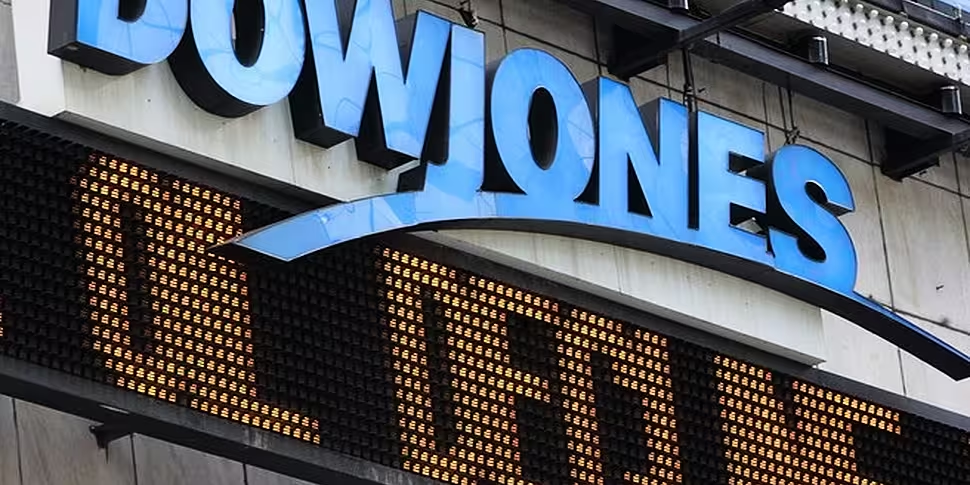When most of us think of the stock market, we conjure up images from the film Trading Places; perhaps people in yellow jackets, waving bits of paper around on the floor of a room heaving with shouting brokers. However, those images no longer represent the real way in which the stock market works.
While people are still involved in making some of decisions on the stock market, financial trading has become the realm of computer codes and algorithms. With that high level of automation has come increased complexity as firms develop machines and programs that are designed to trade much faster than humans can even think.
As the systems that run the financial world become more futuristic, they also begin to go beyond our comprehension, something that was shown in the events of the 6th of May 2010, when the Dow Jones index lost almost 9% of its value in a matter of minutes and hundreds of billions of dollars were wiped off the values of huge multinational corporations.
Known as “the flash crash”, firms such as Accenture saw their stocks trading at $30 a share, before plummeting to a value of just 1c within two seconds.
Six years later, it seems that no one has quite figured out exactly what happened yet.
Andrew Zolli, the author of Resilience: Why Things Bounce Back, spoke to Jonathan McCrea on Futureproof to find out what makes the stock market tick, and why these flash crashes are so dangerous and unpredictable.
Removing human error from the equation
Zolli argues that while technology has completely changed the process, it is all still based on having access to information faster, which has always been an advantage, no matter what field you’re in.
When computers arrived on the scene, the entire process of making decisions became automated: “Not only did the information get faster,” explains Zolli, “but we replaced human beings in the equation with automated machines that [...] will execute trades 10,000 times a second. That’s 10,000 decisions in the time it takes for you to blink your eyes, that are based on a scope of information and connected pieces of information that are vastly more than you could keep in your head”.

Image: Richard Drew / AP/Press Association Images
So what are the people who work in the stock market actually doing then? Well, the major investment decisions are still driven by human beings, and they use the computers to “seek to maximise the advantage of information that’s coming out” as soon as possible.
That desire for speed and quickness drove one of the more bizarre property bubbles in recent memory, when a number of nondescript buildings in New York began to see their rents skyrocket.
There were no plans for luxury apartment blocks or a hipster regeneration behind this boom however, as it turned out that those buildings were the digital trading floor, where the transactions from the stock market were physically taking place.
Traders discovered that if you could put your server as close as physically possible to that building, you would get an information speed advantage that could make you a lot of money.
Although it sounds antiquated, given the advanced technology involved, the speed of light is still the ultimate speed limit of the universe, and a millisecond or two could make a big difference when the machines get through thousands of transactions a second.

Image: Richard Drew / AP/Press Association Images
The decision was eventually taken by those who actually run the markets to invite the traders inside so that they could be monitored, and removing any systemic advantage that would have been garnered from having a shorter cable than someone else.
Amid all the hallways filled with machines running sophisticated algorithms that drive trades and competing against the speed of someone else’s software, the human cost of all this turbulence can be lost.
The human fallout
All the money won and lost in the daily trading or unexplained crashes of the stock market has to come from somewhere, and as Zolli points out, every movement up or down ”affects the rate of college tuition payments, or whether the streets get fixed in some cities, or the quality care of elder care in others. Those dollars and euros have real impact on real people’s lives, this is not just some self-correcting hypothetical mathematics”.
Taking the analogy of driving, Zolli notes that while human beings can build cars that travel hundreds of kilometres an hour, people aren’t allowed to drive them because they move faster than our ability to think. While it’s clear that makes them inherently dangerous, “we’ve built a global, integrated machine that does exactly that with our money”.
That level of complication also means the global financial market moves faster than any of us could even imagine, making it impossible to fully control: “When something goes wrong it’s very hard to know why it’s going wrong, and it’s very hard to stop and it’s very hard to determine after the fact exactly what the causes were”.
While the crashes to date have been accidental, Zolli warns that it is entirely possible that terrorist groups could turn their attentions to the stock markets in an act of cyberterrorism. He notes that ISIS have developed an advanced and encrypted system of communication, along the lines of projects normally reserved for companies such as Facebook and Google, and could put it to use in an act of algorithmic terrorism to cause an intentional crash.
That threat has yet to be acutalised, and as Zolli notes, “everyone is hoping that it won’t take either a malicious act or a big accident to impose some sanity on the system”.
So, is there a solution to redress the delicate balance of this highly complex financial system? Some have suggested the idea of a a high-frequency transaction tax, which was actually implemented in 2012 in France and in 2013 in Italy.
The early evidence from those markets suggests that such a tax has mixed results, partly because you have to implement the tax everywhere. Implementing it in only one market simply prompts financial actors to move their activities abroad.
While there is no silver bullet here and multiple approaches are needed, Zolli argues there is one relatively simple first step that we can take: reintroduce the human element.
“If we make room for human wisdom, human intuition and human intelligence and hybridise it, I actually think that’s a pathway to greater safety and continued innovation, because those packages are just smarter than machines alone”.









